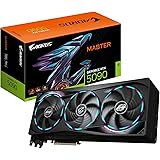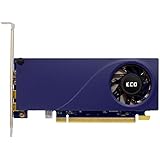Specifications and Performance Optimization
The Nvidia GeForce GTX 1080 Ti is a powerful graphics card that has gained popularity among gamers and cryptocurrency miners alike. Built on the Pascal architecture, this graphics card boasts impressive specifications that contribute to its high performance in both gaming and computational tasks. Understanding these specifications can help users make the most of this hardware.

One of the most noteworthy specifications of the GTX 1080 Ti is its boost clock speed of 1582 MHz. This high clock speed allows the GPU to perform complex calculations quickly, which is especially beneficial in graphics-intensive applications and games. Additionally, the card is equipped with 3584 CUDA cores, which are essential for parallel processing tasks. The greater the number of CUDA cores, the higher the performance in rendering graphics and executing calculations.
The GTX 1080 Ti features a substantial memory capacity of 11 GB GDDR5X, which provides ample space for high-resolution textures and complex data sets. With a memory speed of 11 Gbps, data can be accessed and processed rapidly, allowing for smoother gameplay and improved rendering times. The card also supports PCIe 3. 0, which ensures compatibility with most motherboards available today, facilitating efficient data transfer between the GPU and the system.
For cryptocurrency miners, maximizing the performance of the GTX 1080 Ti is crucial. There are several tips to ensure that users get the most out of this graphics card. First, using the Eth Pill or OHGOD Pill can enhance performance during Ethash mining. These tools can optimize the GPU for mining tasks, thereby improving efficiency. Another essential tip is to prioritize core overclocking by increasing the core clock speed by 90-200 MHz, which can lead to increased mining yields.
Setting the power limit to 70-85% is also recommended. This adjustment helps to balance thermal output and energy efficiency, preventing overheating while still allowing for significant performance gains. Additionally, users should consider adjusting the memory clock speed by adding 400 MHz on Windows or 800 MHz on Linux. This enhancement can boost performance for tasks like Etchash or ETHW mining.
It is important to regularly revalidate hashrates. As the complexity of mining algorithms can change, further growth of the Directed Acyclic Graph (DAG) can affect the effectiveness of the card, necessitating ongoing adjustments and optimizations.
The Nvidia GeForce GTX 1080 Ti offers remarkable specifications that cater to both gamers and cryptocurrency miners. By understanding its architecture and implementing optimization tips, users can significantly enhance their experience, ensuring that they make the most of this powerful GPU.
Summary of the Nvidia Geforce GTX 1080 TI Specifications :
- GPU Architecture: Pascal
- Boost Clock: 1582 MHz
- Memory Speed: 11 Gbps
- Frame Buffer: 11 GB GDDR5X
- NVIDIA CUDA® Cores: 3584
- Bus Support: PCIe 3.0
- Maximum GPU Temperature: 91 C
Profitability Analysis in the Cryptocurrency Mining
The Nvidia GeForce GTX 1080 Ti is a popular graphics card among cryptocurrency miners. Its capabilities in mining various cryptocurrencies, especially those based on the Ethash algorithm like Ethereum and Ethereum Classic, have attracted many users.
The hashrate of the GTX 1080 Ti when mining on Ethash ranges between 43 to 45 megahashes per second (MH/s). At this performance level, the card typically consumes around 200 watts of power. The profitability of mining can vary significantly based on electricity costs and current cryptocurrency prices. For instance, it’s estimated that the daily gross revenue from mining Ethereum could be between $0. 33 and $0. 35 when the electricity cost is set at $0. 10 per kilowatt-hour. Another analysis suggests that miners could earn roughly $0. 64 per day, leading to a net profit of approximately $0. 21 after deducting the electricity expenses.
Looking at the performance on alternative cryptocurrencies, mining Ethereum Classic with the GTX 1080 Ti has been reported to yield a hashrate of about 53. 5 MH/s. Alternatively, on newer Ethash-based coins, such as ETHW, the hashrate is around 43. 5 MH/s. Earnings from these different coins also reveal variability. Monthly estimates indicate that mining Ravencoin at a rate of 22 MH/s could result in profits of about $7. 37, which averages out to roughly $0. 25 per day. On the other hand, mining Ethereum PoW could yield $26. 88 monthly or approximately $0. 90 daily at a hashrate of 36 MH/s. Lastly, mining on the Ergo network returns about $2. 59 per month at an impressive 58 MH/s, indicating that profitability depends heavily on the chosen cryptocurrency and its mining conditions.
- Ethereum Mining Hashrate : 32 MH/s ( Power Consumption : 250-285 Watt/Per Hour )
OverClocking Hashrate :
- 35 MH/s @ memory clock +300 MHz ( Power Consumption increases )
- 37 Mh/s @ memory clock +750 MHz ( Power Consumption increases )
- Zcash Mining Hashrate : 680-740 sol/s ( Power Consumption : 285 Watt/Per Hour )
OverClocking Hashrate : 775 sol/s
UnderVolting Hashrate : 600 sol/s @ ( Power Consumption : 150 Watt/Per Hour )
- Monero Mining Hashrate : 625 H/S
OverClocking Hashrate : 850 H/S
- KECCAK Mining Hashrate : 1275 MH/s
- NIST5 [ Bulwark (BWK) ] Mining Hashrate : 71.615 MH/s
- NeoScrypt [ (ORB) & (PXC) & (FTC) & (INN) & (GBX) & (TZC) & (VIVO) & (CRC) ] Mining Hashrate :0.37 MH/s
- Lyra2REv2 [ (XVG) & (VTC) & (MONA) ] Mining Hashrate : 60 MH/s
- DaggerHashimoto [ EtHash : (ETH) & (ETC) ] Mining Hashrate : 35 MH/s
- Decred (DCR) Mining Hashrate : 4.6 GH/s
- Cryptonight [ (XMR) & (XDN) ] Mining Hashrate : 0.76 kH/s
- CryptoNightV7 Mining Hashrate : 0.78 KH/s
- Lbry ( LBC ) Mining Hashrate : 0.47 GH/s
- Equihash [ (ZEC – ZEN – ZCL) & (BTG) & (KMD) & (HUSH) ] Mining Hashrate : 630 Sol/s
- Pascal [ (PASC) & (PASL) ] Mining Hashrate : 1.76 GH/s
- X11GOST [ Sibcoin (SIB) ] Mining Hashrate : 16.2 GH/s
- SIACOIN (SC) Mining Hashrate : 2.96 GH/s
- BLAKE2S Mining Hashrate : 6.978 GH/s
GTX 1080 TI OverClocking Settings :
- Power :
- Ethereum : 85%
- Zcash : 85%
- Monero : 65%
- Core :
- Ethereum : +100
- Zcash : +100
- Monero : +150
- Memory :
- Ethereum : +750
- Zcash : +500
- Monero : +500
Power Consumption : 250 Watts/Per Hour
Check Amazon for Availability





